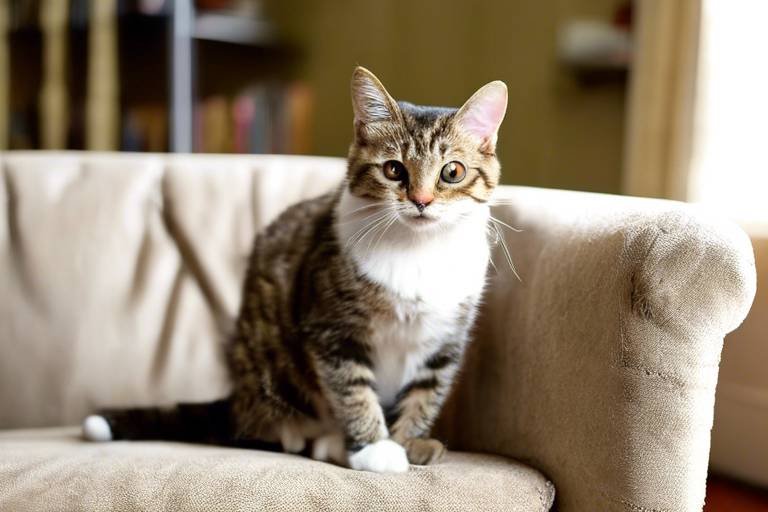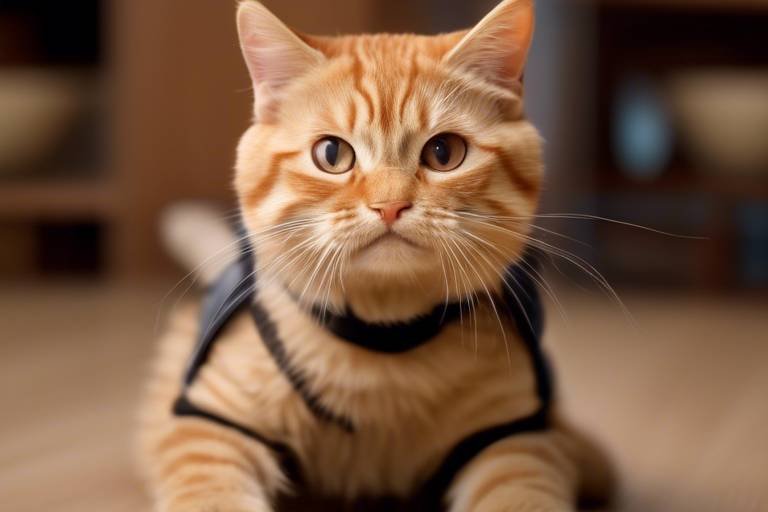Tips for Teaching Your Cat to Stay Off Furniture
As a cat owner, you might find yourself in a constant battle with your feline friend over the furniture. It’s a challenge many of us face! Cats, with their curious nature and love for heights, often see our couches and tables as prime real estate. But fear not! This article provides effective strategies and insights for cat owners looking to train their feline friends to avoid jumping on furniture, promoting a harmonious living environment.
To effectively train your cat, it's essential to understand their natural instincts and behaviors, which often lead them to explore and climb on furniture in your home. Cats are inherently curious creatures, and their instinct to climb allows them to survey their territory. Think of it this way: to a cat, your living room furniture is like a giant jungle gym! By grasping this aspect of their behavior, you can tailor your training methods to align with their instincts rather than against them.
Creating clear boundaries is crucial for training. You need to designate specific areas for your cat while discouraging them from accessing furniture. This is like setting up a playground for your kids; they need to know where they can play and where they can’t. Use physical barriers, like baby gates, or simply close doors to rooms you want to keep off-limits. You can also employ visual deterrents like double-sided tape on furniture surfaces—cats generally dislike the sticky feeling on their paws!
Positive reinforcement is a powerful tool in training. Instead of scolding your cat for jumping on the furniture, how about rewarding them when they choose to stay off? This method works wonders! Every time your cat opts for their designated area instead of the couch, shower them with praise or a tasty treat. This creates a positive association with their behavior, encouraging them to repeat the desired action. Remember, it’s all about making the right choice feel rewarding!
Selecting the right treats can significantly impact your training success. Not all treats are created equal! You’ll want to pick something your cat finds irresistible. Here’s a quick guide to help you choose:
| Treat Type | Pros | Cons |
|---|---|---|
| Soft Chews | Easy to eat, highly palatable | Can be high in calories |
| Freeze-Dried Treats | Natural ingredients, crunchy texture | Can be expensive |
| Homemade Treats | Customizable, healthy options | Time-consuming to prepare |
Timing is essential when rewarding your cat. Discover the best practices for delivering treats to reinforce good behavior effectively. Ideally, you should reward your cat immediately after they stay off the furniture. This helps them make the connection between their action and the reward. Think of it as a game of catch; the faster you throw the ball back after they catch it, the more fun they’ll have!
Sometimes, additional measures are necessary. This section covers various deterrents that can help keep your cat off the furniture without causing harm. Consider using motion-activated devices that emit a harmless puff of air or sound when your cat approaches the furniture. Cats are naturally skittish, and this can discourage them from getting too close. Additionally, placing aluminum foil or plastic mats on your furniture can create an uninviting surface for your cat.
Providing your cat with appealing alternatives can reduce their desire to jump on furniture. This section discusses how to create designated play and relaxation areas. By offering your cat a cozy nook or a fun play area, you can divert their attention away from your beloved couch. Cat trees and scratching posts are excellent options, giving your feline a dedicated space to climb and explore without getting into trouble.
Investing in cat trees and scratching posts can give your cat a suitable place to climb and scratch, diverting their attention from your furniture. These structures not only satisfy their climbing instinct but also help keep their claws healthy. Just like kids need a playground, your cat needs their own space to unleash their energy!
Offering cozy beds and blankets in their designated areas can make these spots more attractive for your cat, encouraging them to stay off the furniture. Cats love warmth and comfort, so consider placing a soft blanket or a plush bed in a sunny corner. This will make it much more appealing than your couch or chair!
Maintaining consistency in your training approach is vital for success. This section emphasizes the importance of regular reinforcement and boundaries to achieve lasting results. Just like any relationship, training takes time and patience. If you slip up and allow your cat on the furniture once in a while, they might get confused about the rules. Stick to your training plan, and soon enough, your cat will understand what’s expected of them.
- How long will it take to train my cat? - Every cat is different, but with consistent training, you can see results in a few weeks.
- What if my cat doesn’t respond to treats? - Try different types of rewards, such as playtime or affection, to see what motivates them.
- Can I use negative reinforcement? - It’s generally more effective to focus on positive reinforcement, as it builds trust and a better bond.
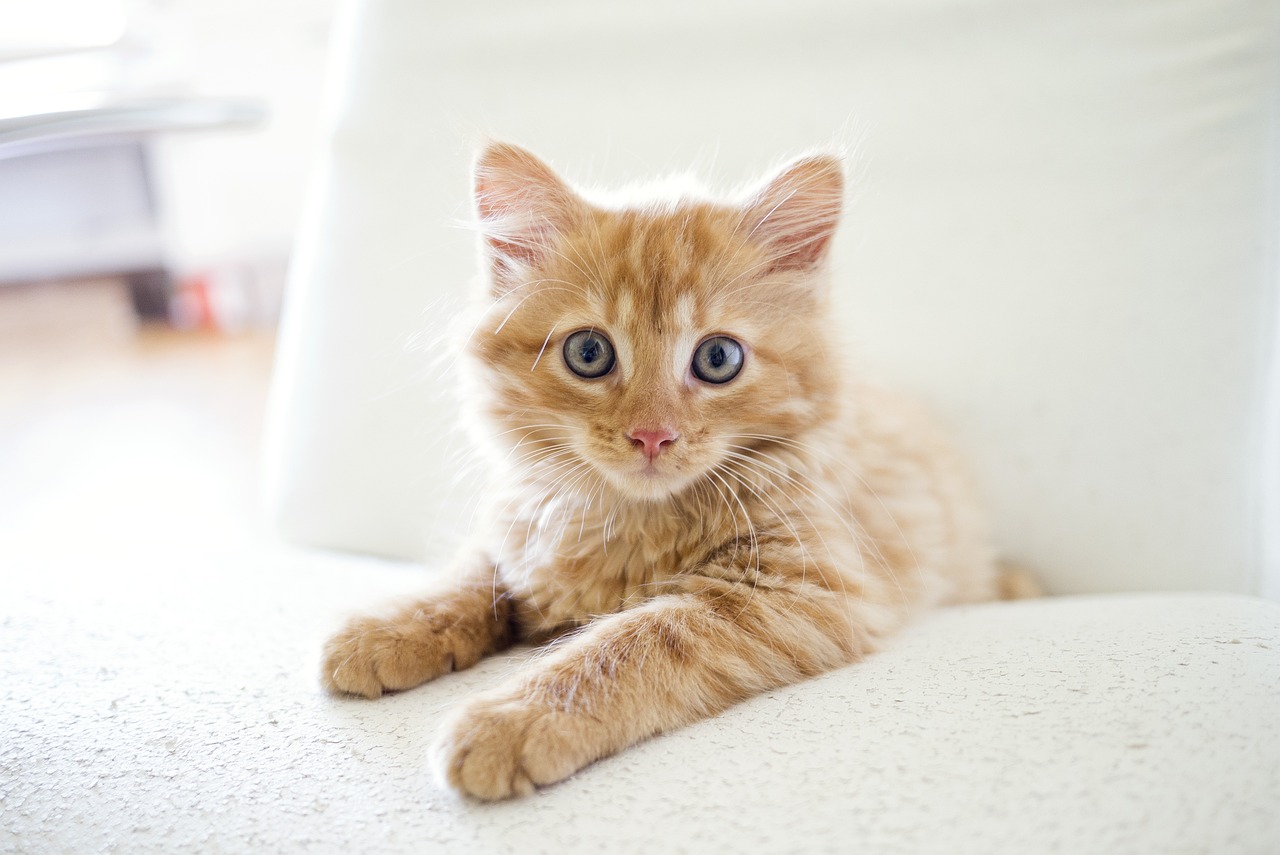
Understanding Feline Behavior
To effectively train your cat, it's essential to understand their natural instincts and behaviors, which often lead them to explore and climb on furniture in your home. Cats are inherently curious creatures, much like little explorers in their own right. They possess a natural inclination to climb, scratch, and perch themselves on high surfaces. This behavior is deeply rooted in their evolutionary history as hunters, where being elevated allowed them to survey their territory and spot potential prey. So, when your fluffy friend leaps onto your couch or dining table, they're not just being mischievous; they're acting on instinct!
Moreover, cats are creatures of habit. If they find a spot that’s comfortable or interesting, they will likely return to it repeatedly. This is why your favorite chair might suddenly become their new throne! Understanding this can help you redirect their behavior rather than simply scolding them. It’s like trying to stop a kid from playing in a playground—why not give them a better playground instead?
Additionally, it's important to recognize that cats are sensitive to their environment. Changes in their surroundings, such as new furniture, loud noises, or even the presence of other animals, can trigger their desire to jump onto furniture for comfort and security. Creating a calm and stable environment can help reduce their need to seek out high places. To help you grasp the various factors influencing your cat's behavior, here’s a quick overview:
| Behavior | Reason |
|---|---|
| Climbing | Instinctual hunting behavior and exploration. |
| Scratching | Maintaining claws and marking territory. |
| Seeking High Places | Feeling safe and observing surroundings. |
| Curiosity | Exploring new items or changes in the environment. |
Understanding these behaviors not only helps you train your cat but also fosters a deeper bond between you and your furry companion. Instead of viewing their climbing as a nuisance, consider it an opportunity to engage with them in a positive way. By recognizing their instincts, you can guide them towards acceptable behaviors that keep both your furniture safe and your cat happy.
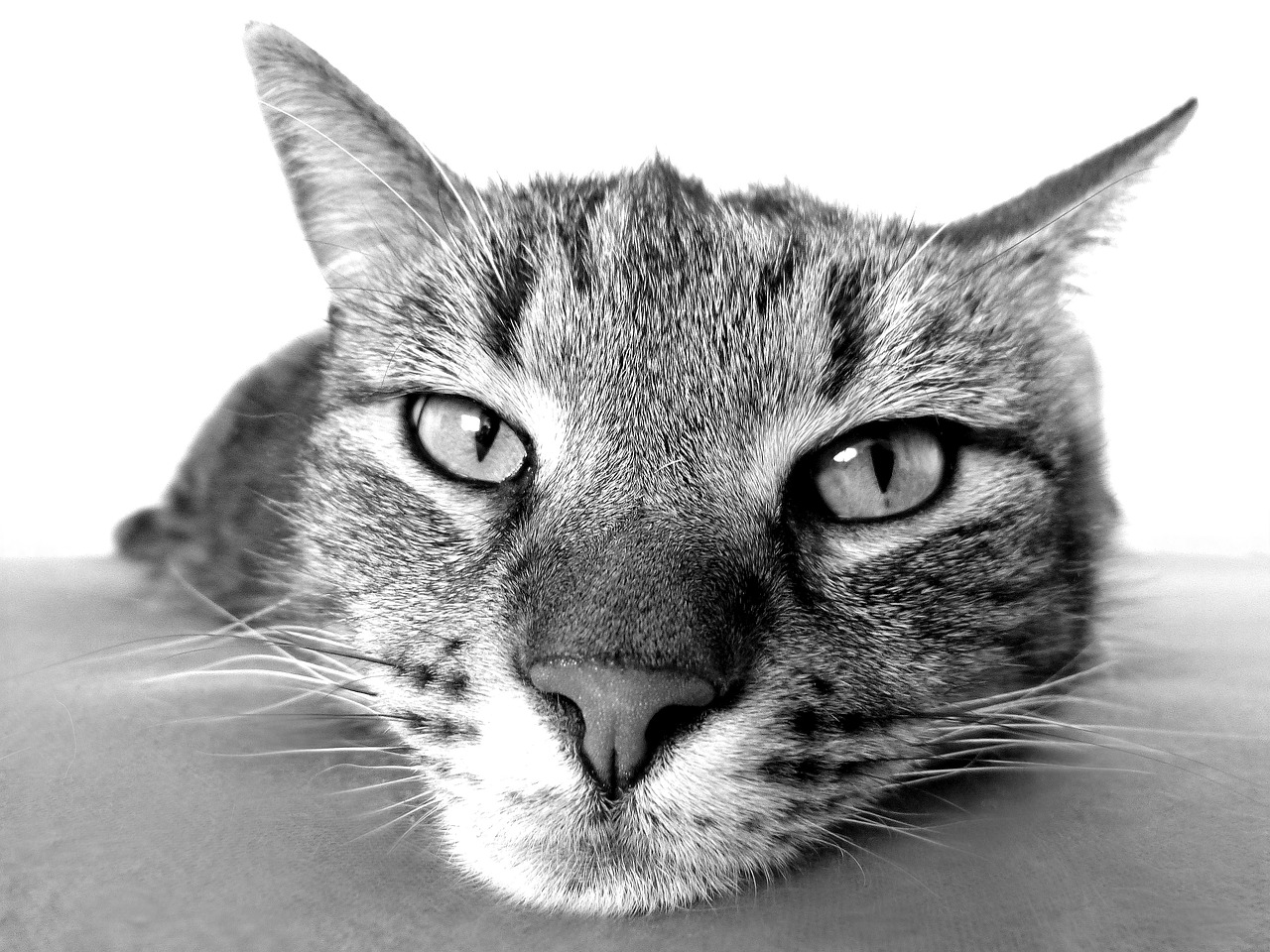
Setting Up Boundaries
When it comes to training your cat to stay off the furniture, one of the most effective strategies is to establish clear and consistent boundaries. Cats are naturally curious creatures, and their instinct to explore can lead them to jump on surfaces that you’d prefer they avoid. Think of boundaries as a gentle guide that helps your feline friend understand what is acceptable and what isn’t in your shared living space.
Start by identifying the specific furniture pieces that you want to keep off-limits. Maybe it’s your favorite sofa, the dining table, or even the kitchen counters. Whatever it is, make it clear to your cat that these areas are off-limits. You can achieve this by using a combination of physical barriers, such as closed doors or baby gates, and behavioral cues. For example, if you catch your cat trying to jump onto the couch, gently but firmly say “no” and redirect them to an appropriate area.
In addition to verbal commands, it’s crucial to create a consistent environment. Cats thrive on routine, so if they know that certain areas are always off-limits, they will be less likely to test those boundaries. Consider using visual markers to reinforce these limits. For instance, you could place a decorative throw or a blanket on the furniture that you want to protect. Not only does this act as a visual deterrent, but it also signals to your cat that this space is not meant for them.
Another effective technique is to designate specific areas for your cat to enjoy. This could be a cozy corner with their bed, a sunny spot by the window, or even a designated play area filled with toys. By providing them with alternatives, you’re not just telling them what they can’t do; you’re also showing them what they can do! Make these spaces appealing by adding their favorite toys, cozy blankets, or even some catnip. The more enticing you make these areas, the less likely they’ll feel the need to jump onto the furniture.
Lastly, consistency is key when setting boundaries. Make sure everyone in your household is on the same page regarding the rules. If one person allows the cat on the furniture while another doesn't, it can create confusion for your furry friend. By ensuring that everyone follows the same guidelines, you’ll reinforce the message that certain areas are off-limits, making it easier for your cat to understand and respect those boundaries.
Using Positive Reinforcement
When it comes to training your cat, positive reinforcement is like the golden ticket. Imagine your cat as a little sponge, soaking up everything you teach them, but only if you make it fun and rewarding! Instead of scolding or punishing your furry friend for jumping on the furniture, why not encourage them to stay off by rewarding them when they do the right thing? This method not only strengthens your bond but also creates a more enjoyable learning experience for both of you.
So, how do you effectively use positive reinforcement? First, you need to identify what makes your cat tick. Is it a tasty treat, a favorite toy, or maybe some extra cuddle time? Once you know what motivates your feline companion, you can use it to your advantage. For instance, every time your cat chooses to lounge on their designated spot instead of your couch, shower them with praise and give them a treat. This will help them associate staying off the furniture with something positive and rewarding.
It's essential to be consistent with your rewards. If your cat jumps on the furniture but you only reward them sometimes when they stay off, they might get confused. Consistency is key! You can even create a little training schedule to keep track of their progress. For example, if your cat successfully stays off the furniture for a week, reward them with a special treat or a new toy. This not only reinforces the behavior but also makes your cat feel like a superstar!
Now, let’s talk about timing. The best rewards come right after the desired behavior. If your cat jumps off the furniture and into their cozy bed, that’s the perfect moment to give them a treat. This helps them make the connection between their action and the reward. Think of it like a game; the quicker you respond, the more they’ll understand what’s expected of them.
In summary, using positive reinforcement is a fantastic way to train your cat to stay off the furniture. By identifying their motivators, being consistent with rewards, and timing your praise perfectly, you'll create a training environment that is both effective and enjoyable. So, why not turn training into a fun game for you and your cat? After all, a happy cat means a happy home!
- How long does it take to train my cat? Training time can vary widely depending on the cat's personality and your consistency. Typically, you might start seeing results in a few weeks.
- What if my cat doesn’t respond to treats? If your cat isn’t motivated by food, try using toys or extra affection as rewards. Every cat is unique!
- Can I use negative reinforcement? While some owners may resort to negative reinforcement, it's generally less effective and can harm your relationship with your pet. Focus on positive methods instead.
- What if my cat continues to jump on the furniture? Consistency is key! Keep reinforcing the desired behavior and consider adding more engaging alternatives for your cat.
Choosing the Right Treats
When it comes to training your cat to stay off the furniture, one of the most effective strategies is using treats as a reward. However, not all treats are created equal, and choosing the right ones can make a significant difference in your training success. Think of treats as the gold stars of your cat's training journey—they need to be enticing enough to motivate your furry friend to behave the way you want.
First and foremost, consider your cat's preferences. Just like humans, cats have individual tastes, and what might be a favorite for one might be completely ignored by another. Some cats go wild for crunchy treats, while others prefer soft, chewy options. To find out what your cat loves best, you might need to experiment a little. You could try a variety of treats, such as:
- Freeze-dried meat: Packed with protein and irresistible to most cats.
- Commercial cat treats: Available in various flavors and textures, these are specifically designed to appeal to feline taste buds.
- Homemade treats: If you enjoy cooking, consider whipping up some simple cat treats using safe ingredients like chicken or fish.
Once you've identified your cat's favorite treats, it's essential to consider their nutritional value. While it's tempting to reward your cat with treats all day long, moderation is key. Too many treats can lead to weight gain and health issues. Look for treats that are low in calories and made with high-quality ingredients. You can even check the packaging for specific claims like "grain-free" or "natural" to ensure you're providing the best for your feline companion.
Another factor to consider is the size of the treats. Small, bite-sized pieces are typically the best choice for training. They allow you to reward your cat frequently without overdoing it. Think of it as giving your cat a little pep talk every time they resist the urge to jump on the couch. A quick, tasty reward reinforces their good behavior and keeps them engaged in the training process.
Finally, don’t forget about the timing of your treats. You want to reward your cat immediately after they exhibit the desired behavior, which helps them make the connection between their actions and the reward. This immediate feedback is crucial for effective training. So, keep those tasty morsels handy and ready to go!
In summary, choosing the right treats involves understanding your cat's preferences, ensuring nutritional value, selecting the appropriate size, and timing your rewards perfectly. By putting thought into the treats you use in your training regimen, you'll not only make the process more enjoyable for your cat but also pave the way for a harmonious living environment where your feline friend respects the boundaries you've set.
Q: How many treats should I give my cat during training?
A: It's best to keep treats to a minimum to avoid overfeeding. A few small treats during each training session is sufficient.
Q: Can I use my cat's regular food as treats?
A: Yes, if your cat is motivated by their regular food, you can use it as a reward. Just ensure you adjust their meal portions accordingly.
Q: What if my cat doesn't like any of the treats I offer?
A: Try different brands and flavors. Sometimes, cats can be picky, so don't hesitate to experiment until you find something they love.
Timing Your Rewards
When it comes to training your cat, timing is everything. Imagine you’re at a party, and someone hands you a compliment right after you’ve done something great. It feels amazing, doesn’t it? This is how your cat feels when you reward them right after they exhibit the desired behavior. If you wait too long, they might not connect the dots between their action and the treat, which can lead to confusion and frustration.
So, how do you nail the timing? First, you should reward your cat immediately after they stay off the furniture. This could be within a few seconds of them choosing their cozy spot on the floor instead of your couch. The goal is to create a strong association between their good behavior and the reward. For example, if you see your cat lounging on their designated mat instead of the armchair, that’s your cue to say, “Good kitty!” and offer a treat right away.
To make this even easier, consider using a clicker as a training tool. Clickers are great because they provide a consistent sound that can mark the exact moment your cat does something right. The sound of the click is like a spotlight shining on their good behavior, making it clear what they did to earn the reward. After clicking, you can quickly follow up with a treat. This method not only reinforces the behavior but also makes training sessions more engaging and fun for both you and your feline friend.
Keep in mind that every cat is different. Some may respond better to verbal praise, while others might be more treat-driven. Experiment with different types of rewards and see what gets your cat purring with joy. Consistency in your timing is crucial; the more you practice, the better your cat will understand what you expect from them.
Here’s a quick table summarizing the best practices for timing your rewards:
| Action | Timing | Type of Reward |
|---|---|---|
| Staying off the furniture | Immediately (within 2-3 seconds) | Treat or verbal praise |
| Using designated play areas | Immediately after they explore | Clicker sound + treat |
| Scratching on posts | Immediately after they scratch | Treat + petting |
In conclusion, mastering the art of timing your rewards can significantly enhance your training effectiveness. Just remember, the quicker you reward your cat for the right behavior, the more likely they are to repeat it. So, grab those treats, get your clicker ready, and watch as your cat learns to respect the boundaries you've set!
Implementing Deterrents
When it comes to keeping your cat off the furniture, sometimes you need to think outside the box—or rather, outside the couch! Implementing deterrents can be an effective strategy to discourage your feline from lounging where they shouldn't. But don’t worry, we’re not talking about anything harsh or harmful; the goal here is to gently guide your cat towards better habits. Think of it as setting up a gentle fence around your prized possessions!
One popular method is to use double-sided tape on the areas of the furniture your cat loves most. Cats generally dislike the sticky sensation on their paws, which can deter them from jumping up. You can also use aluminum foil, as many cats are not fond of the crinkly sound it makes. Place it on your furniture when you're not around, and before you know it, your furry friend might think twice about their climbing adventures!
Another effective deterrent is the use of motion-activated sprays. These devices detect when your cat approaches and emit a harmless burst of air or a light mist. It’s like a surprise party for your cat, minus the cake! Not only does this catch their attention, but it also teaches them to associate the furniture with an unexpected experience, making them less likely to jump up in the future.
It's also worth considering cat repellent sprays that are specifically designed to keep cats away from certain areas. These sprays usually contain scents that are unappealing to cats but pleasant for humans. Just be sure to test any product on a small area first to ensure it won’t damage your furniture.
Lastly, remember that consistency is crucial. If you decide to use deterrents, be sure to apply them regularly and in conjunction with positive reinforcement. For instance, if your cat stays off the couch, reward them with a treat or some playtime. This way, they learn that staying off the furniture can lead to good things!
In summary, implementing deterrents requires a mix of creativity and patience. By using items that your cat naturally dislikes and pairing them with positive reinforcement, you can cultivate a more harmonious home where both you and your feline friend can coexist happily. So, get ready to reclaim your furniture while keeping your kitty content!
- Q: How long does it take for a cat to learn to stay off the furniture?
A: Patience is key! It can take a few weeks to a couple of months, depending on the cat's personality and consistency in training. - Q: Can I use negative reinforcement?
A: While some owners may consider negative reinforcement, it's generally not recommended. Positive reinforcement is more effective and fosters a better bond with your cat. - Q: What if my cat ignores the deterrents?
A: If your cat seems unfazed, try mixing up your approach. Combine different deterrents and ensure you’re also providing plenty of positive reinforcement when they stay off the furniture.
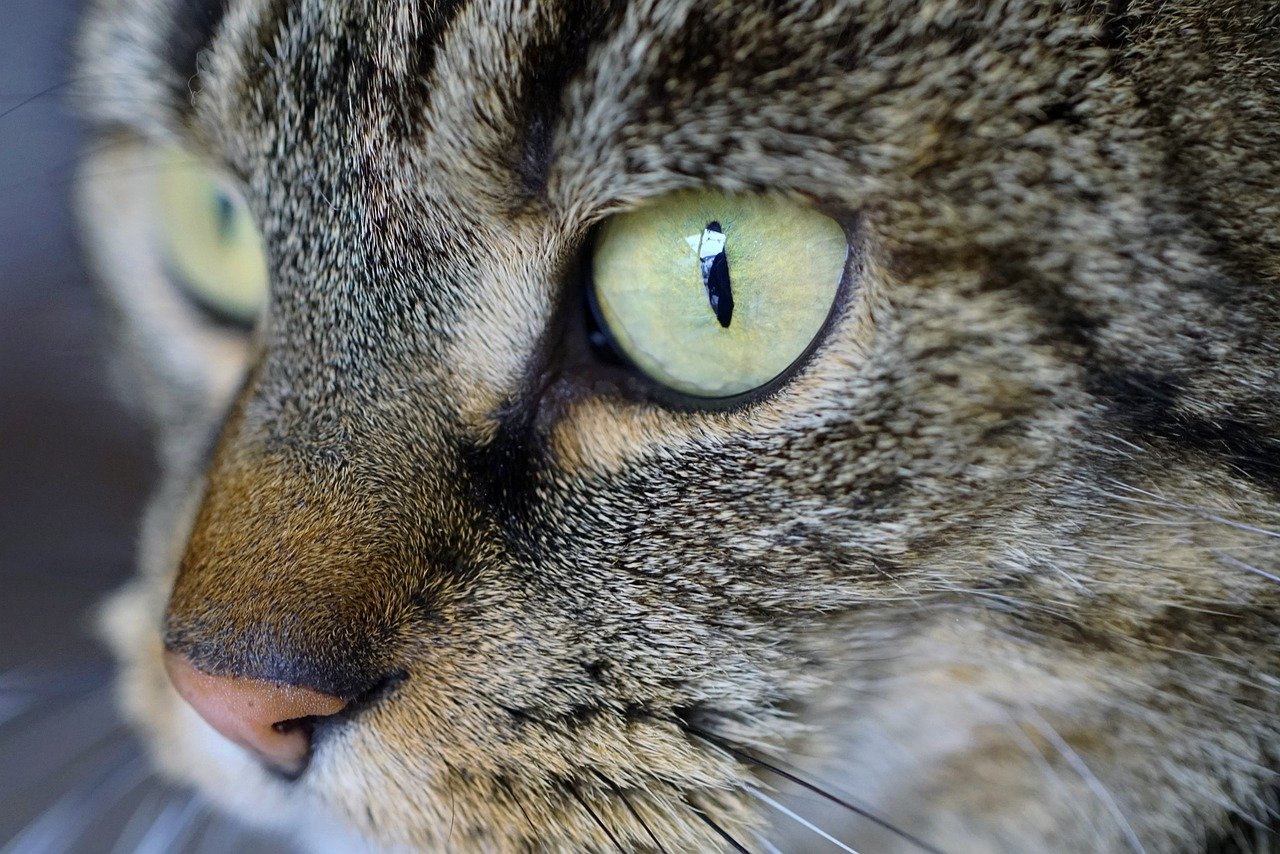
Creating Alternative Spaces
When it comes to keeping your cat off the furniture, one of the most effective strategies is to create alternative spaces that are just as enticing as your couch or dining table. Cats are naturally curious and love to explore, so providing them with designated areas can help redirect their energy and instincts. Think of it as giving your feline friend their very own playground, where they can climb, scratch, and lounge to their heart's content. By doing this, you not only protect your furniture but also enhance your cat's well-being by stimulating their natural behaviors.
Start by assessing your home and identifying areas where you can set up these alternative spaces. Ideally, these spots should be away from high-traffic areas and should offer a sense of security and comfort for your cat. You can use a combination of cat trees, scratching posts, and cozy beds to create a multi-functional space that caters to your cat's needs. For instance, a tall cat tree can provide a perfect vantage point for your kitty to observe their surroundings, while a scratching post can satisfy their need to scratch and stretch.
Additionally, consider incorporating various textures and heights in these spaces. Cats love to climb and perch in high places, so a tall cat tree with multiple levels can keep them entertained for hours. You might also want to add soft blankets or cushions to their designated areas, making them feel more inviting. The more comfortable and engaging you make these spots, the less likely your cat will be to seek out your furniture.
Another great way to enhance these alternative spaces is by using interactive toys. Toys that encourage play, such as feather wands or laser pointers, can keep your cat engaged and distracted from jumping on your furniture. You could even create a small play zone with tunnels and hideaways where your cat can explore and play. Remember, the key is to make these areas feel special and rewarding for your cat.
Ultimately, the goal is to create an environment where your cat feels fulfilled and entertained, reducing their desire to jump on furniture. By providing them with a variety of engaging activities and comfortable resting spots, you’ll be surprised at how quickly they adapt to their new spaces. So get creative, have fun with it, and watch your cat thrive in their very own designated areas!
- How long does it take to train a cat to stay off furniture?
Training a cat can vary widely in duration, depending on the individual cat's personality and the consistency of your training methods. Generally, with consistent effort, you may start to see results within a few weeks. - What if my cat ignores the alternative spaces?
It may take some time for your cat to adjust. Make sure the alternative spaces are appealing and consider using treats or toys to encourage them to explore these new areas. - Are there any safe deterrents I can use?
Yes! You can use double-sided tape on furniture surfaces, as cats dislike the sticky texture. Additionally, citrus scents are known to deter cats, so consider using citrus-scented sprays in areas you want to protect.
Cat Trees and Scratching Posts
When it comes to keeping your furniture safe from those curious little paws, are your best friends. Think of these structures as your cat's personal playground—a place where they can climb, scratch, and lounge to their heart's content. Just like kids need a play area to explore and burn off energy, your feline companions require their own designated spaces to satisfy their natural instincts. Investing in a good-quality cat tree or scratching post not only diverts their attention from your precious furniture but also promotes healthy behaviors.
Cat trees come in various shapes and sizes, often featuring multiple levels, scratching surfaces, and cozy spots for your cat to curl up. Imagine a multi-story apartment designed just for your furry friend, complete with hideaways and lookout points. This not only gives them a sense of security but also keeps them entertained for hours. When choosing a cat tree, look for one that is sturdy and tall enough for your cat to climb and explore safely. You want it to feel like an adventure, not a risk!
Scratching posts, on the other hand, are essential for maintaining your cat's claws and preventing them from turning your sofa into their personal scratching pad. Cats have a natural instinct to scratch, and providing them with a designated scratching post helps fulfill this need. Consider offering a variety of scratching surfaces—some cats prefer vertical posts, while others enjoy horizontal ones. You might even find that your kitty loves a combination of both!
To maximize the appeal of these structures, consider the following tips:
- Location Matters: Place the cat tree or scratching post in a prominent area where your cat loves to hang out. This could be near a window where they can watch birds or in the living room where they can be part of the action.
- Incorporate Toys: Some cat trees come with attached toys or dangling strings, which can make climbing and scratching even more enticing. If yours doesn’t, consider adding some of your cat's favorite toys nearby.
- Use Catnip: Sprinkling a little catnip on the scratching post can make it irresistible. Cats often go wild for catnip, and it can encourage them to use their new furniture instead of yours.
By providing your cat with engaging and stimulating alternatives like cat trees and scratching posts, you’re not just protecting your furniture—you’re also enriching their lives. It's a win-win situation! Remember, the key is to make these alternatives as appealing as possible, so your cat will choose them over your couch or dining chairs. With a little creativity and patience, you can create a harmonious living environment where both you and your feline friend can thrive.
Q: How do I get my cat to use the scratching post?
A: Start by placing the scratching post in a prominent area and use catnip or toys to attract them. If they use it, reward them with treats to reinforce the behavior.
Q: How tall should a cat tree be?
A: Ideally, a cat tree should be tall enough for your cat to stretch out completely and feel secure. A height of 5-6 feet is usually sufficient for most cats.
Q: What materials are best for scratching posts?
A: Look for scratching posts made from durable materials like sisal rope, cardboard, or carpet. These textures are appealing to cats and help keep their claws healthy.
Cozy Beds and Blankets
Creating a cozy environment for your cat is not just about aesthetics; it’s about ensuring they feel secure and comfortable in their own space. When you provide soft beds and snuggly blankets, you're giving them a reason to choose their designated areas over your beloved furniture. Think of it this way: if you had a plush sofa in one room and a hard chair in another, where would you prefer to relax? Exactly! Your cat feels the same way.
To make their designated areas more inviting, consider using a variety of materials and textures. Cats love to curl up in soft, warm spots, so look for beds that are made from fleece, cotton, or even faux fur. You might also want to explore options that come with removable covers for easy cleaning. After all, we all know how messy our feline friends can be!
In addition to beds, blankets can play a significant role in enticing your cat to stay off the furniture. A well-placed blanket can serve as a cozy nook where your cat can lounge, nap, or even play. You can choose blankets that are lightweight for summer or thicker ones for winter. The key is to create a space that feels like a little sanctuary just for them.
Here’s a quick rundown of what to consider when selecting cozy beds and blankets for your cat:
- Size: Ensure the bed is appropriate for your cat’s size. A snug fit can make them feel secure.
- Material: Opt for soft, washable materials that are gentle on their fur.
- Location: Place the bed or blanket in a quiet, warm area where your cat likes to hang out.
- Design: Choose a style that complements your home while still being functional.
By investing in cozy beds and blankets, you're not just providing comfort; you're also promoting a sense of ownership and security for your cat. When they have their own special spots to retreat to, they are less likely to feel the urge to jump onto your furniture. Just like us, cats need a place to call their own, a space that reflects their personality and instincts.
Q: How do I encourage my cat to use the new bed?
A: You can encourage your cat to use their new bed by placing it in a favored spot and adding some of their toys or a piece of your clothing to make it more inviting.
Q: What if my cat still prefers the furniture?
A: If your cat continues to prefer the furniture, consider adding more enticing features to their bed, like a heated pad or a blanket that smells like you. Patience and consistency are key!
Q: How often should I wash the cat's bedding?
A: It's best to wash your cat's bedding at least once a week to keep it clean and free from allergens. Regular cleaning also helps maintain a fresh scent that your cat will appreciate.

Consistency is Key
When it comes to training your cat to stay off the furniture, consistency is not just important; it’s absolutely vital. Imagine trying to build a sandcastle on a beach where the tide keeps washing it away. Frustrating, right? That’s exactly what happens when you don’t maintain a consistent approach in your training. If you allow your furry friend to jump on the couch one day and then scold them the next, you’re sending mixed signals. Your cat will be confused, and confusion can lead to frustration—for both of you!
Establishing a routine is crucial. This means that every time your cat makes an attempt to leap onto the forbidden furniture, you should respond in the same way. Whether it’s gently redirecting them or using a verbal cue, your reaction should be uniform. For example, if you say “no” when they jump but then let them stay there because they look cute, you’re undermining your own efforts. Cats thrive on predictability, and by being consistent, you’ll help them learn the rules of the household much faster.
To help you stay consistent, consider creating a training schedule. You can set aside specific times each day for training sessions. During these sessions, reinforce the boundaries you’ve set. Use treats, verbal praise, and even playtime as rewards for good behavior. Here’s a simple table to help you visualize a potential training schedule:
| Day | Training Activity | Duration |
|---|---|---|
| Monday | Positive reinforcement for staying off furniture | 15 minutes |
| Wednesday | Introduce deterrents (e.g., double-sided tape) | 10 minutes |
| Friday | Reward for using designated spaces | 15 minutes |
Furthermore, it’s essential to involve all members of your household in the training process. If one person allows the cat on the furniture while another enforces the rules, it creates confusion. Everyone should be on the same page, reinforcing the same boundaries and using the same cues. This unified front will help your cat understand that the rules apply no matter who is around.
Lastly, remember that training takes time. Just like you wouldn’t expect a toddler to learn the rules of the house overnight, your cat won’t grasp the concept of staying off the furniture immediately. Be patient, stay committed, and celebrate the small victories along the way. Before you know it, your feline companion will be a pro at respecting the boundaries you’ve set!
- How long does it take to train a cat to stay off furniture? It varies by cat, but with consistent training, you may see results in a few weeks.
- What if my cat ignores the deterrents? You may need to try different types of deterrents or adjust your training methods.
- Can I use negative reinforcement? It's generally more effective to focus on positive reinforcement, as negative methods can lead to fear and anxiety.
Frequently Asked Questions
- Why does my cat like to jump on the furniture?
Cats are naturally curious creatures, and they love to explore their environment. Furniture provides them with a high vantage point, which is instinctual for them as it allows them to survey their territory and feel safe. It's like their personal mountain range in your living room!
- What are some effective deterrents to keep my cat off the furniture?
There are several methods you can try! Some popular deterrents include using double-sided tape on furniture surfaces, placing aluminum foil, or using commercial pet-safe sprays that cats dislike. Think of these deterrents as your cat's version of "no trespassing" signs.
- How can I use positive reinforcement to train my cat?
Positive reinforcement is all about rewarding your cat for good behavior. Whenever you catch your cat staying off the furniture, give them a treat or some affection. It's like throwing a mini celebration every time they make the right choice!
- What types of treats work best for training my cat?
High-value treats are your best bet! Look for small, soft treats that your cat absolutely loves. You can also consider freeze-dried meat or fish as these are often irresistible to felines. It's like offering them a gourmet meal for just being good!
- How important is consistency in training my cat?
Consistency is crucial! Cats thrive on routine, so it's important to reinforce the same rules every time. If one day you let them on the couch and the next you don’t, it can confuse them. Think of it like teaching a child; clear and consistent rules help them learn faster!
- Can I create alternative spaces for my cat?
Absolutely! Providing cat trees, cozy beds, and scratching posts can give your cat appealing alternatives to your furniture. It's like setting up a fun playground just for them, making your furniture less tempting!
- Is it okay to scold my cat when they jump on the furniture?
Scolding can be counterproductive and may create fear or anxiety. Instead, redirect their behavior with positive methods. Think of it as guiding them rather than punishing them. You want to be their friendly trainer, not the scary enforcer!

